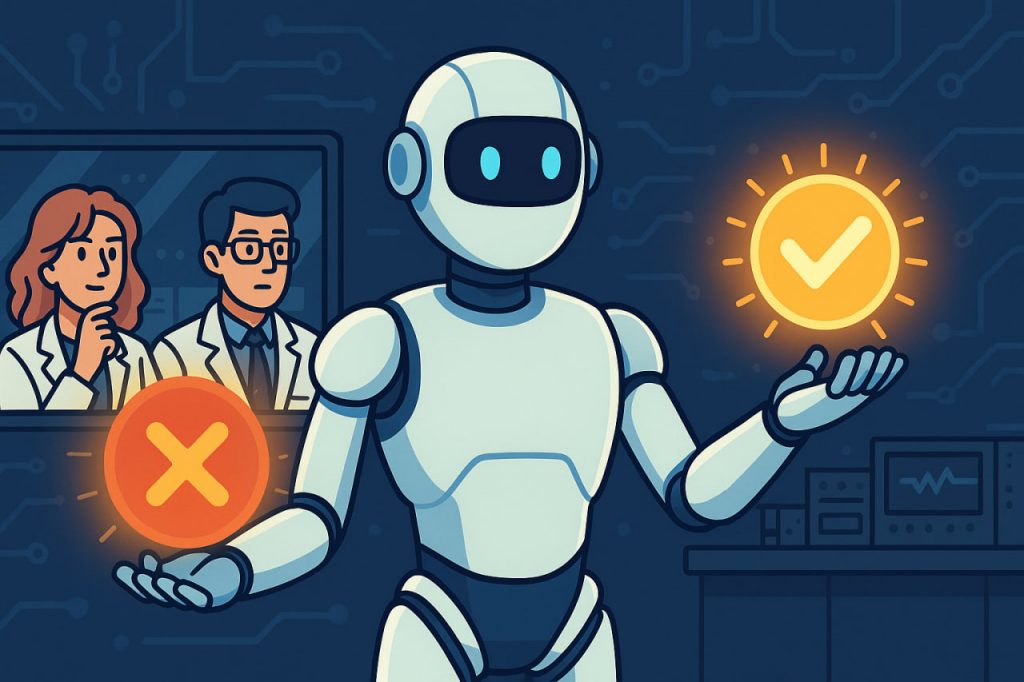In an age where artificial intelligence shapes everything from news to medical decisions, the question of whether we can build a neural network that always tells the truth has become one of the most profound challenges in modern technology. Truth, though seemingly simple, is not an absolute concept for machines. While AI systems excel at recognizing patterns and generating realistic answers, distinguishing truth from assumption remains a fundamentally human task. Building an AI that never lies would require not only advanced engineering but also a philosophical understanding of what truth itself means.
The Nature of Truth in Artificial Intelligence
Unlike humans, AI systems do not possess beliefs, intentions, or understanding. They operate purely through pattern recognition—analyzing data and generating statistically likely responses. When an AI provides information, it does not “know” whether that information is true; it merely reproduces what it has learned from data. If that data contains inaccuracies, biases, or outdated facts, the AI will inevitably reflect them. Thus, an AI can only be as truthful as the information it was trained on, and since no dataset is perfectly reliable, absolute truth remains beyond its reach.
The Problem of Hallucinations
One of the major obstacles to truthful AI is the phenomenon known as hallucination, where neural networks generate incorrect or fabricated information that sounds convincing. This occurs because most language models, such as ChatGPT or Google Gemini, are designed to produce coherent and contextually relevant text rather than verified facts. When they lack specific information, they “fill the gaps” using probabilities based on similar patterns. Scientists are developing new architectures and feedback systems to minimize hallucinations, but complete elimination remains an unsolved problem in AI research.
The Challenge of Defining Truth
Another reason why building a perfectly honest AI is difficult lies in the subjectivity of truth. Facts can be verifiable, but interpretation varies depending on culture, ethics, and context. For example, historical events or moral issues may be perceived differently by different societies. Should an AI reflect one version of truth or present multiple perspectives? According to experts in AI philosophy such as Dr. Luciano Floridi, the goal should not be to create “absolute truth machines” but rather systems that maintain transparency, accountability, and evidence-based reasoning.
Expert Approaches to Truthful AI
Researchers are exploring multiple methods to make AI more reliable. One approach involves integrating retrieval-based systems, where the AI accesses trusted databases and real-time information rather than relying solely on training data. Another method, reinforcement learning from human feedback (RLHF), allows the AI to learn from expert evaluations of factual accuracy. Scientists like Timnit Gebru and Yoshua Bengio advocate for open datasets and ethical oversight to ensure that AI reflects verified sources and diverse viewpoints. These methods are steps toward truthfulness, but even they depend on human-defined standards of accuracy.
The Role of Ethics and Transparency
Ethicists argue that the pursuit of a completely truthful AI is not only technical but moral. If an AI were programmed to prioritize truth above all else, it could face ethical conflicts—for instance, disclosing confidential data or personal information that violates privacy laws. Transparency, explainability, and contextual awareness become essential safeguards. Developers must teach AI not only what to say but when and how to say it responsibly. Ethical AI design therefore emphasizes honesty balanced with empathy, legality, and human values.
Could AI Ever Be 100% Truthful?
Theoretically, an AI could approach perfect truthfulness if given access to continuously verified information and strict reasoning constraints. However, reality is far more complex. Data changes over time, interpretations evolve, and human knowledge itself is never complete. Even the most advanced systems, such as those used in scientific research or law, can only approximate truth within known limits. AI may one day achieve contextual honesty—a state where it communicates the most accurate information available while clearly expressing uncertainty when facts are unknown. This transparency may be more valuable than artificial certainty.
Human Oversight: The Final Check
Experts agree that the ultimate safeguard for truth in AI is human oversight. Humans bring moral judgment, empathy, and contextual understanding—qualities machines cannot replicate. As Professor Gary Marcus notes, “AI can process information, but humans interpret meaning.” Therefore, a truly reliable AI must work as a collaborative partner, not a replacement for human reasoning. The goal is not a machine that knows everything, but one that supports humans in seeking truth more effectively.
Interesting Facts
- The term “AI hallucination” describes fabricated but convincing falsehoods generated by AI.
- No AI currently has built-in access to a universal “truth database.”
- Reinforcement learning from human feedback (RLHF) significantly reduces AI errors in factual tasks.
- AI truth detection systems are being developed to verify outputs before publication.
- Philosophers argue that absolute truth may be impossible even for humans, making the goal of “truthful AI” a relative concept.
Glossary
- Hallucination – A false or fabricated statement generated by AI that appears credible.
- Pattern Recognition – The AI process of identifying recurring structures or relationships in data.
- Transparency – The principle of making AI decisions and reasoning processes understandable to users.
- Retrieval-Based System – An AI model that pulls real information from external databases instead of relying solely on memory.
- Reinforcement Learning from Human Feedback (RLHF) – A technique for improving AI accuracy through human evaluation and correction.
- Contextual Honesty – The ability of AI to communicate what is known accurately and express uncertainty where appropriate.
- Ethical Oversight – Human supervision ensuring AI behavior aligns with moral and legal principles.
- Accountability – The responsibility of AI creators to explain and justify the system’s decisions.
- Explainability – The clarity with which an AI system’s operations can be understood by humans.
- Data Bias – Distortion in AI outputs caused by unbalanced or incomplete training data.


